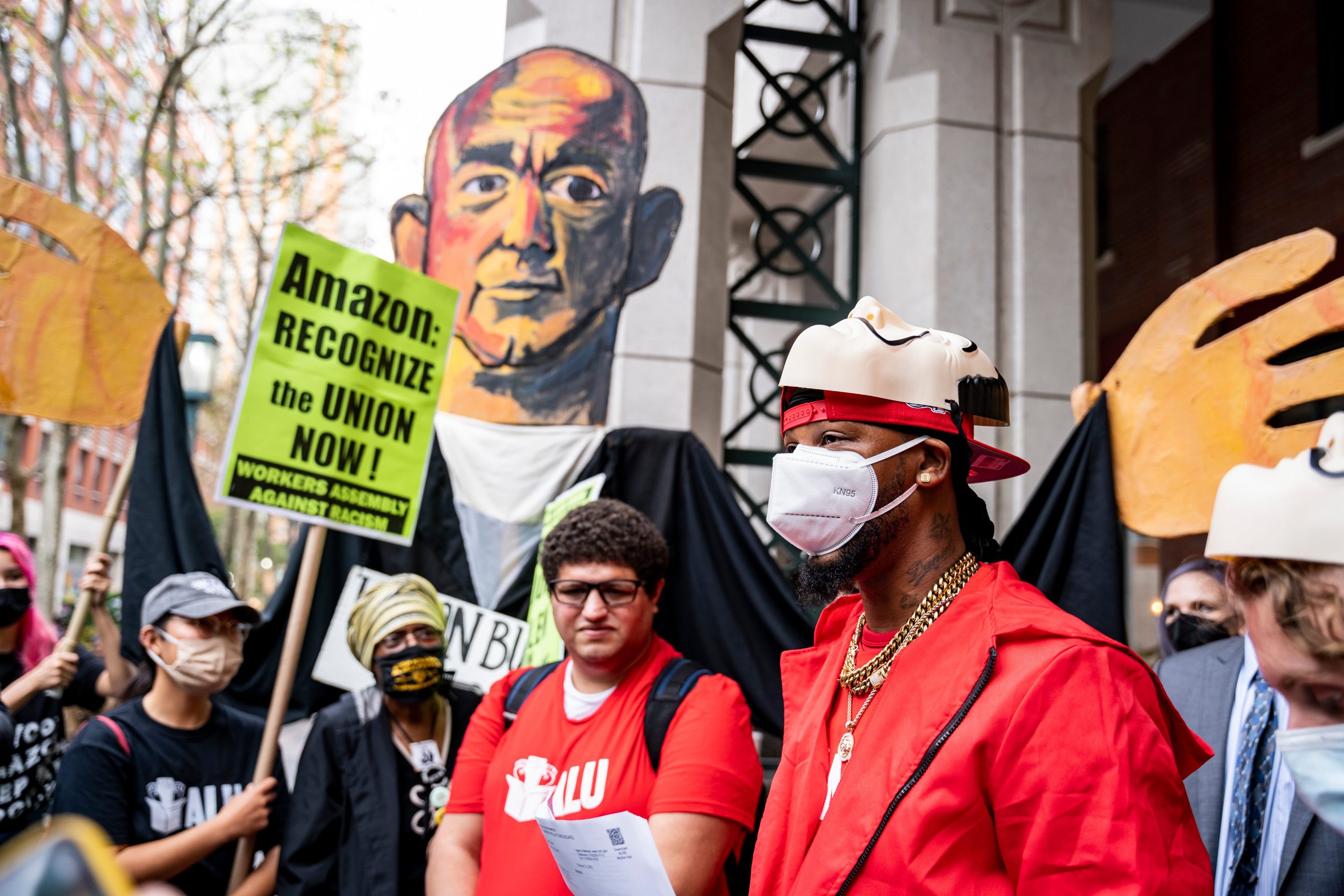
On Apr. 1, Amazon warehouse JFK 8 on Staten Island tallied the final votes from their recent union election. The union won with 70% of the vote.
This victory for the workers at JFK 8 is a historic moment in the realm of labor movements of the 21st century.
The union involved in this election is one created by Amazon workers. Christian Smalls started it at the beginning of the pandemic to combat what he saw as unethical working conditions within Amazon’s warehouses.
Smalls was fired shortly after starting the union. While it is illegal to fire a worker for trying to create a union, an investigation into Smalls’ firing couldn’t prove beyond a reasonable doubt that it was the cause for the firing.
The firing would not deter Smalls, who would continue to fight for unionization for the next two years. These efforts were heavily pushed back by Amazon.
The e-commerce giant poured millions of dollars into an anti-union campaign that they spread to all of their warehouses in the U.S.
Amazon sent corporate representatives to hold seminars on the detriments of worker unionization. Talk of unions in the workplace was banned and was punishable by suspension or termination.
Amazon banned certain union-related words from being said on the internal Amazon worker chatting app. Some of these words included “union,” “restroom,” and “freedom.”
Internal messages from the highest levels of Amazon corporate also portrayed a grim picture. The company intentionally wanted Smalls to be the face of the union movement because they thought he was “not smart or literate.”
Amazon believed that if Smalls were the face of the labor movement, it would fail. They were wrong.
A supermajority of workers at this key distribution center has voted to unionize. Amazon has filed a complaint with the National Labor Relations Board, and they say the votes are fraudulent and demand a recount.
The NLRB complaint is likely to go nowhere, and if the union vote does maintain, it may change the landscape of blue-collar work forever.
The impact of a single location unionizing can be felt in every warehouse. This month, another contentious union election will happen in a Bessemer, Alabama location. Several other locations have begun the initial steps of filing for elections.
There is a precedent for this domino effect in recent memory. At Starbucks, what started as a single location in Buffalo, New York voting to unionize has turned into over a hundred locations nationwide, including one in Atlanta.
If Amazon warehouses around the country can unionize to the same or greater extent as Starbucks, it could have massive implications for the country.
The Amazon Labor Union seeks to improve the pay and working conditions of Amazon warehouse workers.
Amazon warehouse workers start at a base pay of $19/hour for reference.
While this figure is very high compared to the average minimum wage in a field like food service, it is far lower than the national average for all warehouse workers, which sits closer to $30/hour.
Also, a recent study has shown that the level of workplace injuries at Amazon, both minor and significant, is far higher than that of other warehouse workers.
These are the types of things this union effort is trying to help. If they are successful, it will lead to a drastic improvement in the lives of the near one million people working for Amazon and millions more around the nation.
